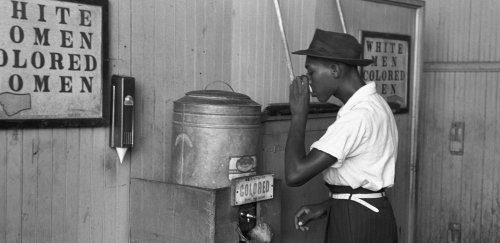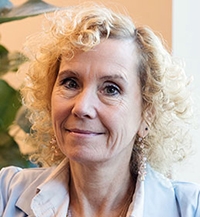Discrimination Does More Than Divide People
- News & Events
- News
- Discrimination Does More Than Divide People

Psychology professor researches the effects of microaggressions on people of color.
Though we live in a post-civil rights era, microaggressions (indirect, subtle forms of discrimination) are experienced by people of color across America. Whereas overt racial discrimination might have involved a sign stating “Whites Only.” The more subtle forms of racial discrimination – microaggressions – involve treating an individual as if the sign was still there.

Rhode Island College Assistant Professor of Psychology Kymberlee O’Brien has engaged in research focused on microaggressions and the physiological effects of a lifetime of discrimination. Her research stems from a lifelong interest in social justice.
“I remember my best friends – people of color – being treated differently by teachers and store owners. I couldn’t understand why and it angered me. I think it has informed my research interests,” she said.
Social scientists have long known that the daily experience of discrimination permanently and profoundly alters the healthy functioning of one of the major stress hormones – cortisol. However, O’Brien may be the first scientist to provide measurable evidence of this.
Often called the fight-or-flight hormone, cortisol is nature’s built-in alarm system that mobilizes the body for action in the face of danger. In a threatening situation, adrenal glands trigger the release of cortisol into the bloodstream, resulting in dilated pupils; an increase in heart rate, blood pressure, breathing rate; and the feeling that one has only three choices: fight, flight or freeze.
What happens when the body is frequently on high alert is that the normal functioning of cortisol is derailed, triggering the body to make too much cortisol.
“Because microaggressions are subtle,” O’Brien said, “a person doesn’t necessarily know how to deal with them. You can fight overt discrimination by speaking out, but when discrimination is subtle, what people usually do is freeze up. And you see that physiologically.”
At a psychophysiology research lab at UMass Boston, O’Brien conducted surveys of 400 subjects (students and community members) on their personal experiences of discrimination. From their hair clippings, she was able to measure the amount of cortisol that had circulated in their bodies for three months.
Cortisol levels were highest among African American men, followed by African American women, Latina women and white women, she said. White women reported microaggressions in the workplace via sexual harassment and social devaluation.
“I think these elevated cortisol levels provide concrete evidence that microaggressions are real experiences people are having; they’re not just making this up; they’re not just playing the victim,” said O’Brien. It’s difficult to talk about discrimination, when your experiences are not taken seriously, when people respond with, “Perhaps you’re overreacting. Perhaps you’re being too emotional. That can’t be true. I’m sure the person didn’t mean it that way.” We live in a system that continuously renders these experiences invisible, she said.
But the body doesn’t lie, said O’Brien. “Early humans would have a cortisol response if they were being chased by a mammoth,” she said. “Their pupils would dilate, their heart would race and they would run. But now, someone could racially or sexually insult you and you’d have that same adrenalin response as if your life was in danger but you can’t run, you don’t know how to respond, and that’s where it becomes deleterious. These experiences take a real toll.”
Reports of Microaggressions in Recent News
Two Native American brothers were attending a campus tour of Colorado State University (CSU) when a parent called the campus police to report the “suspicious pair.” The brothers were patted down and released only after showing an email from CSU verifying that they had signed up for the tour.
Two Mexican American women were waiting in line at a convenience store. They exchanged a few words in Spanish and were interrupted by a uniformed Border Patrol agent who requested to see their ID to verify their citizenship.
An African American male, owner of a youth mentoring program, had two white children in his care. A woman followed him in her car and reported him to the police. The officer contacted the children’s parents to verify that they had entrusted the children to him.
Two African American men were waiting for a friend at a Philadelphia Starbucks to begin a business meeting, when a store employee had them arrested on suspicion of trespassing.
